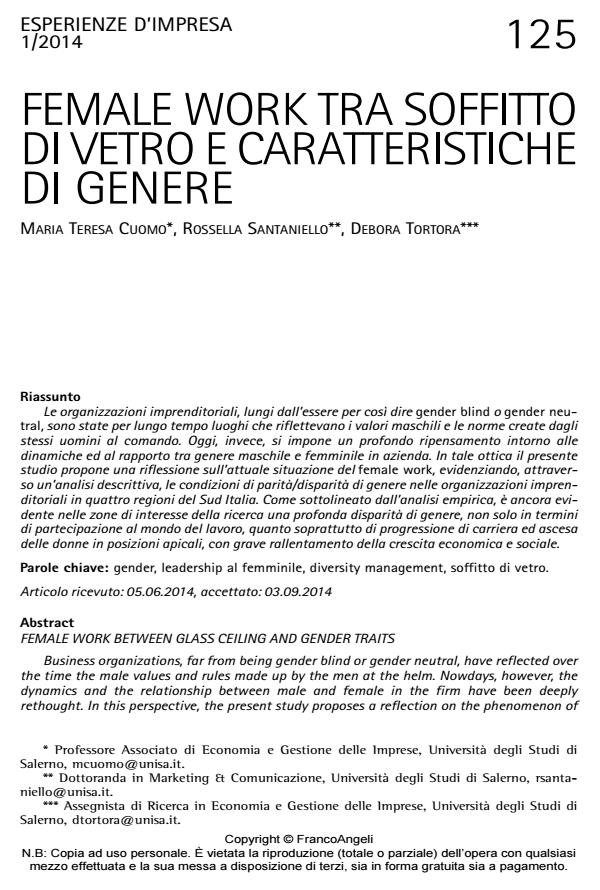Female work between glass ceiling and gender traits
Journal title ESPERIENZE D'IMPRESA
Author/s Camilla Barbarossa
Publishing Year 2014 Issue 2014/1
Language Italian Pages 27 P. 125-151 File size 222 KB
DOI 10.3280/EI2014-001006
DOI is like a bar code for intellectual property: to have more infomation
click here
Below, you can see the article first page
If you want to buy this article in PDF format, you can do it, following the instructions to buy download credits

FrancoAngeli is member of Publishers International Linking Association, Inc (PILA), a not-for-profit association which run the CrossRef service enabling links to and from online scholarly content.
Business organizations, far from being gender blind or gender neutral, have reflected over the time the male values and rules made up by the men at the helm. Nowdays, however, the dynamics and the relationship between male and female in the firm have been deeply rethought. In this perspective, the present study proposes a reflection on the phenomenon of female work. By means of a descriptive analysis, the situations of gender equality/disparity in the firms in four regions of the South of Italy. As the empirical data highlighted, it is still evident in these areas a deep gender disparity, not only in terms of women participation in the labor market, but especially in their career progression and rise in top positions, provoking a serious delay of the economic and social growth.
Keywords: Key words: gender, female leadership, diversity management, glass ceiling.
Camilla Barbarossa, Female work tra offittodi vetro e aratteristichedi genere in "ESPERIENZE D'IMPRESA" 1/2014, pp 125-151, DOI: 10.3280/EI2014-001006